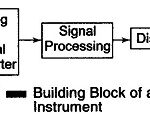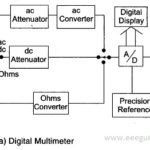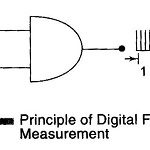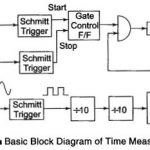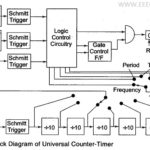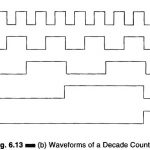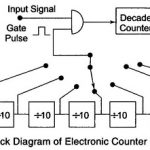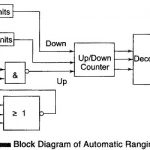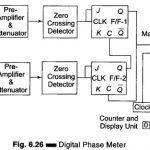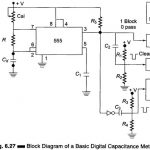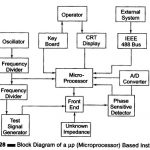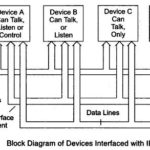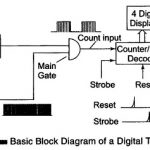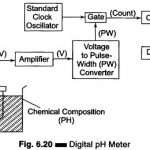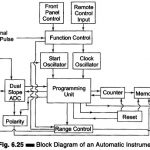Digital Instruments Articles:
What is a Digital Instrument?: Digital instrument are rapidly replacing their analog counterparts. The parameters of interest in a laboratory environment are (i) voltage (ii) current (iii) power (iv) frequency, and (v) logic. We shall consider digital systems which measure the above … (Read More)
Working Principle of Digital Multimeter: Analog meters require no power supply, they give a better visual indication of changes and suffer less from electric noise and isolation problems. These meters are simple and inexpensive. Digital meters, on the other hand, offer … (Read More)
Digital Frequency Meter: Principle of Operation of Digital Frequency Meter – The signal waveform is converted to trigger pulses and applied continuously to an AND gate, as shown in Fig. 6.4. A pulse of 1 s is applied to the other … (Read More)
Digital Measurement of Time: Principle of Operation of Digital Measurement of Time – The beginning of the time period is the start pulse originating from input 1, and the end of the time period is the stop pulse coming from input … (Read More)
Universal Counter Timer: All measurements of time period and frequency by various circuits can be assembled together to form one complete block, called a Universal Counter Timer. The universal counter uses logic gates which are selected and controlled by a single front … (Read More)
Decade Counter Circuit: A Decade Counter Circuit is of flip-flops (F/Fs) in cascade, which counts in the base 10 (decimal number system). This means that there is a sequence of ten distinct counts in increasing order. Three F/Fs used in cascade … (Read More)
Different Modes of Operation of Electronic Counter: The decade counter can be easily incorporated in a commercial test instrument called an electronic counter. A decade counter, by itself, behaves as a totaliser by totalling the pulses applied to it during the … (Read More)
Digital Measurement of Frequency (Mains): The conventional method of measuring the frequency of an electrical signal consists of counting the number of cycles of the input electrical signal during a specified gate interval. The length … (Read More)
Automation in Digital Instruments: One of the advantages of digital multimeters is their ease of operation. The reading is easy to take and does not lend itself to errors of interpretation. Moreover, the number of ranges … (Read More)
Digital Phase Meter Block Diagram and Working Principle: The simplest technique to measure the phase difference between two signals employs two flip-flops. The signals to be fed must be of the same frequency. First, the signals must … (Read More)
Digital Capacitance Meter Block Diagram: Since the capacitance is linearly proportional to the time constant, when a capacitor is charged by a constant current source and discharged through a fixed resistance, we can use a 555 timer … (Read More)
Microprocessor Based Instruments: Digital instruments are designed around digital logic circuits without memory. The use of microprocessors as an integral part of measuring instruments has given rise to a whole new class of instruments, called intelligent instruments. Figure … (Read More)
IEEE 488 Bus Block Diagram: The purpose of IEEE 488 BUS is to provide digital interfacing between programmable instruments. There are many instrumentation systems in which interactive instruments, under the command of a central controller, provide superior error-free results when compared … (Read More)
Digital Tachometer Working Principle: Digital Tachometer Working Principle technique employed in measuring the speed of a rotating shaft is similar to the technique used in a conventional frequency counter, except that the selection of the gate period is in accordance with … (Read More)
Working Principle of Digital pH Meter | Block Diagram: The Digital Measurement of hydrogen ion activity (pH) in a solution can be accomplished with the help of a pH meter. For those unfamiliar with … (Read More)
Fully Automatic Digital Instrument: A multimeter with automatic polarity indication, automatic zero correction and automatic ranging (of course coupled with automatic decimal point indication) only needs a signal applied to its input, and a command as … (Read More)
